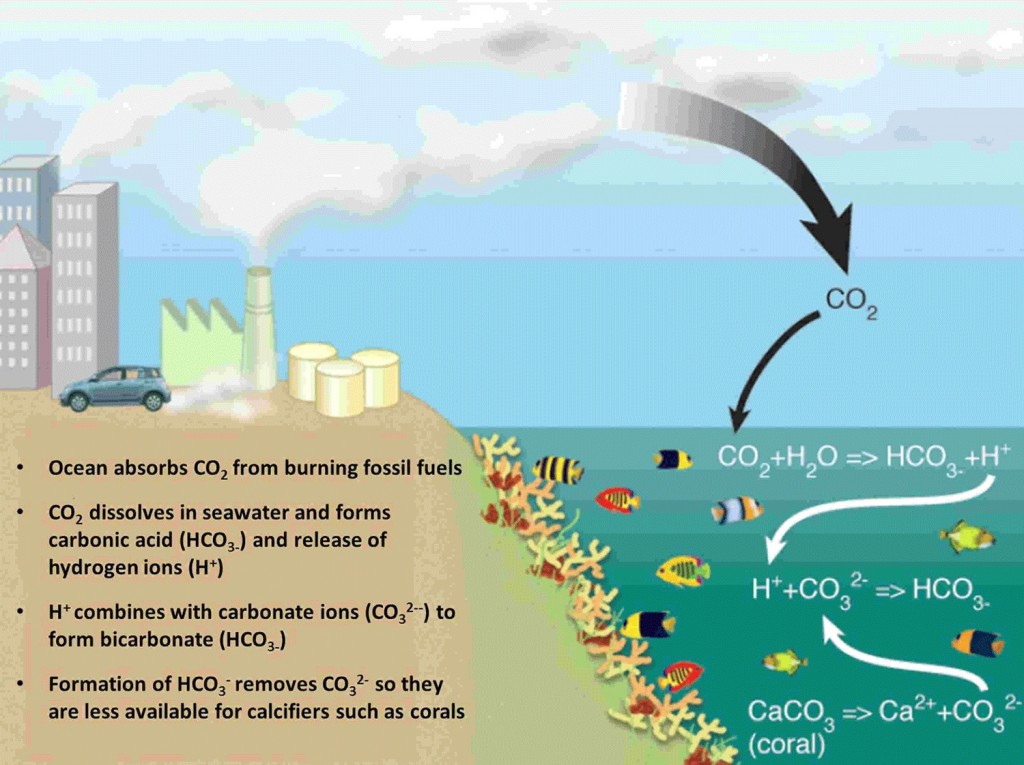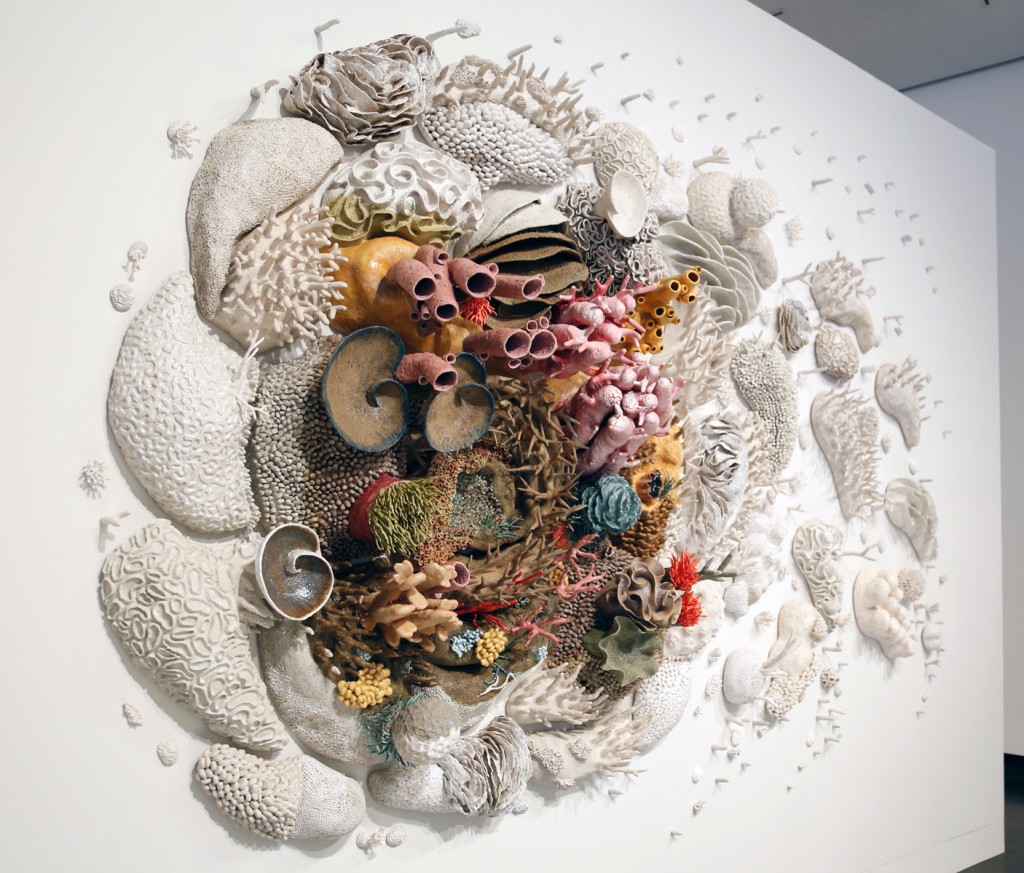Art brings the coral reef crisis above the surface
May 7, 2014
Coral reefs have captivated my imagination for as long as I can remember. I am happiest when the exotic forms, vibrant colors and often-venomous appendages of the animals that inhabit a tropical reef dance through the window of my scuba mask as I slowly hover above. Maybe it’s because I’m relatively small and I respect small creatures that can build big beautiful things, but I feel like I relate to corals – arguably one of the least relatable animals – on a very deep level.

I often feel like a coral, working in my studio using simple tools and my hands to methodically sculpt and texture clay to construct large, delicate, stony structures that mimic the prolific reef-builders. I poke thousands of holes to recreate the repetitive growth of coral colonies with individual polyps that precipitate calcium carbonate from seawater to form stony skeletons that, over time, grow atop one another to compose the vast, complex structures we know as reefs. It feels essential that the medium of my work be ceramic, as calcium carbonate also happens to be a common ingredient in clay and glaze materials. Not only does the chemical structure of my work parallel that of a natural reef, but brittle porcelain anemone tentacles and coral branches break easily if improperly handled, similar to the delicate bodies of living reef organisms.
Since I relate so deeply to corals, I am profoundly saddened by their demise. By now it is well known that reef corals are a sort of “canary in the coalmine” for climate change – so sensitive that the slightest alteration to the temperature or chemistry of the seawater that surrounds them can cause total devastation through coral bleaching, death and reef erosion. Human-caused carbon dioxide (CO2) emissions are causing seawater to warm and acidify – two of the most devastating threats to coral reef health.

In combination with other threats including pollution and overfishing, our CO2 emissions will spell disaster for reefs unless we act now to mitigate our impacts. Without swift and drastic decreases to our greenhouse gas emissions, overfishing practices and land-based pollution, leading researchers agree that reefs may cease to function as ecological cradles for marine life by the end of this century.

The Intergovernmental Panel on Climate Change (IPCC) – a United Nations group made up of hundreds of scientists, economists and other experts – agrees. According to Ottmar Edenhofer, a German economist and co-chairman of the committee that wrote the most recent IPCC report, “We cannot afford to lose another decade… If we lose another decade, it becomes extremely costly to achieve climate stabilization.” The committee found that although it is still technically possible to limit global warming to a bearable level, only a dramatic decrease in emissions over the next 15 years would be sufficient to achieve that goal. Luckily, the report also found that new regulations such as stricter vehicle efficiency standards to reduce emissions are possible without hurting our quality of life, and renewable energy technology is becoming less expensive. It’s becoming very possible for each of us to make choices as citizens and voters that will help mitigate climate change before it’s too late. According to the IPCC, greenhouse gas emissions will need to decrease by 40% to 70% by 2050. That is a HUGE task, but by supporting measures to direct resources away from further investment in fossil fuels and towards renewables today, we can still limit how catastrophic climate change becomes in the future for us and for our blue planet.
Are coral reefs doomed to fade into oblivion or will we allow them to recover and regain their vibrancy? We won’t act unless we care, and we won’t care if we don’t know. We especially won’t care if we are unaware of the vast resources and inherent value of reefs that make them important to us. I hope that the idea of one small person creating such huge, intricately detailed ceramic sculptural installations causes viewers to realize just how important reefs are to me, and to become curious enough to learn more about how the ocean is important to them. As an “artivist” (artist + activist), I sincerely hope that I am not building memorials to reefs for a future without them, but rather celebrations of their enduring yet fragile beauty.





•••
June 12: Courtney will be presenting her work as an invited artist in the Governing Oceans panel during the AESS Conference at Pace University in NYC.
June 14: Courtney will be speaking about her work at the closing reception for the Alumni Invitational 4 exhibition at the Tang Museum at Skidmore College in Saratoga Springs, NY.
Learn more about Courtney’s work on her website and in this recent article from Grist.com. You can follow Courtney on Facebook, Twitter and Instagram and find her smaller Hope Spot-inspired clay art to inspire ocean conservation in the Mission Blue online shop.
Learn more about the recent IPCC reports via the NYTimes HERE.








Vere good